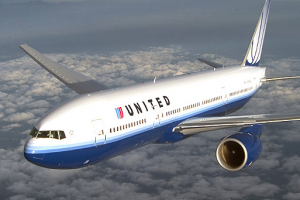Originally posted on January 17, 2013 @ 11:03 am
Of the 84 million Americans who traveled over the 2012 holiday season, an estimated 42 percent (35 million) of this population flew to their destination. Air travel is continuously growing in popularity for travelers all over the world, and it’s not expected to slow down anytime soon. However, it wasn’t always this way. Fifty years ago, air travel was considered a luxury (and came with a luxurious price tag), often excluding the average American. Actually, this convenient mode of transportation didn’t become accessible to the general public until relatively recently.
A Timeline of Air Travel From the 1960s Onward
- 1960s: Air travel in the ’60s was expensive. The average round-trip ticket between Cleveland and Washington, D.C., was approximately $75, which equals about $400 today when accounting for inflation. Passengers went through zero security screenings and meals were served on every flight. Smoking was even permitted throughout the plane.
- 1970s: Flying peaked in popularity in the beginning of the ’70s, with passenger numbers nearly doubling in 1972 compared with those of 1955. Flight attendant uniforms were colorful, stylish and often featured miniskirts and hot pants in an effort to appeal to a male majority of travelers.
- 1980s: Pillows and blankets were liberally supplied during flights in the ’80s in an attempt to keep passengers comfortable throughout the flight. Passengers were never charged for extra luggage and one movie was shown, which could be heard only with headphones. Although there were metal detectors in the ’80s, passengers could keep shoes and belts on and endure no pat downs or X-ray screenings.
- 1990s: The introduction of the Boeing 747-400 jumbo jet had a dramatic impact on the air travel industry. These more fuel-efficient planes could carry up to 500 passengers, which increased the availability of both domestic and international flights. Since flying was simpler and less costly for airlines, tickets subsequently became more affordable for travelers, and so more people chose this transportation option.
Air Travel Today and in the Future
More stringent security screenings may be an annoyance for passengers traveling by air today; however, these measures have made flying safer, more efficient and more accessible for passengers around the world. The industry has undergone many changes in the last 50 years, and is only expected to become more sophisticated and accessible as technology improves. This bright future, combined with the growing need for aviation professionals, makes aviation management a promising educational path for students who want to be a part of this exciting industry.
Air travel has changed so dramatically in the last 50 years that younger travelers almost don’t believe it when learning what this transportation option used to be like. More efficient machines and improved regulations for comfort and safety are part of what makes air travel as popular as it remains today. With the rapid advancement of modern technology, air travel is expected to improve on a faster and more massive scale than it has in the past. Being a part of this industry gives professionals the unique opportunity to contribute to this growth and experience the flight industry’s incredible progress firsthand.
